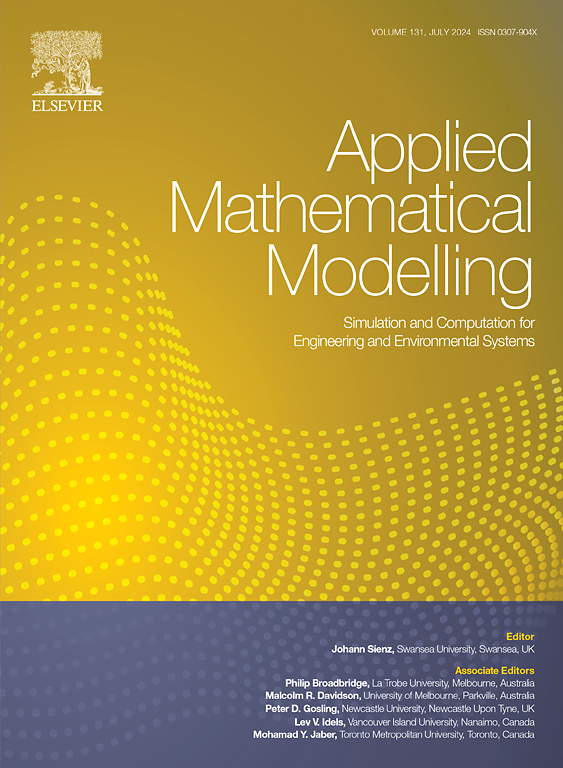General and fundamental solutions for isotropic thermo-chemo-elasticity with multi-species diffusion in a steady state
IF 4.4
2区 工程技术
Q1 ENGINEERING, MULTIDISCIPLINARY
引用次数: 0
Abstract
In this paper, a 3D steady-state general solution for isotropic thermo-chemo-elastic media with multi-species diffusion is derived by introducing two displacement functions and utilizing the rigorous operator theory together with generalized Almansi's theorem. Based on the derived general solution, fundamental solutions for the problems of intact half-infinite, infinite, and bi-material bodies subjected to point loading are obtained by the potential theory method. The fundamental solution to a penny-shaped crack problem is also derived on basis of the general solution and by using the generalized potential theory. Several numerical calculations for specific thermo-chemo-elastic materials are carried out to verify the present analytical solutions and to analyze the 3D distributions of field variables. Furthermore, the transformation relationships among these fundamental solutions are discussed. The present general and fundamental solutions can be served as a basis for deriving analytical or numerical solutions to various boundary value problems in the context of thermo-chemo-elasticity.
稳定状态下具有多物种扩散的各向同性热-热弹性的一般和基本解法
本文利用严格算符理论和广义Almansi定理,引入两个位移函数,导出了具有多组分扩散的各向同性热化学弹性介质的三维稳态通解。在导出的通解的基础上,用势理论方法得到了完整半无限、无限和双材料体受点载荷问题的基本解。在一般解的基础上,利用广义势理论,导出了便士型裂纹问题的基本解。对特定的热化学弹性材料进行了数值计算,验证了本文的解析解,并分析了场变量的三维分布。进一步讨论了这些基本解之间的转换关系。本文的一般解和基本解可作为热化学弹性中各种边值问题的解析解或数值解的基础。
本文章由计算机程序翻译,如有差异,请以英文原文为准。
求助全文
约1分钟内获得全文
求助全文
来源期刊

Applied Mathematical Modelling
数学-工程:综合
CiteScore
9.80
自引率
8.00%
发文量
508
审稿时长
43 days
期刊介绍:
Applied Mathematical Modelling focuses on research related to the mathematical modelling of engineering and environmental processes, manufacturing, and industrial systems. A significant emerging area of research activity involves multiphysics processes, and contributions in this area are particularly encouraged.
This influential publication covers a wide spectrum of subjects including heat transfer, fluid mechanics, CFD, and transport phenomena; solid mechanics and mechanics of metals; electromagnets and MHD; reliability modelling and system optimization; finite volume, finite element, and boundary element procedures; modelling of inventory, industrial, manufacturing and logistics systems for viable decision making; civil engineering systems and structures; mineral and energy resources; relevant software engineering issues associated with CAD and CAE; and materials and metallurgical engineering.
Applied Mathematical Modelling is primarily interested in papers developing increased insights into real-world problems through novel mathematical modelling, novel applications or a combination of these. Papers employing existing numerical techniques must demonstrate sufficient novelty in the solution of practical problems. Papers on fuzzy logic in decision-making or purely financial mathematics are normally not considered. Research on fractional differential equations, bifurcation, and numerical methods needs to include practical examples. Population dynamics must solve realistic scenarios. Papers in the area of logistics and business modelling should demonstrate meaningful managerial insight. Submissions with no real-world application will not be considered.
 求助内容:
求助内容: 应助结果提醒方式:
应助结果提醒方式:


